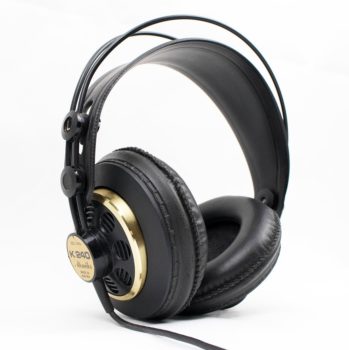3D Audio: The Linchpin of VR & the Future of Entertainment
by Romany Reagan on 26th Oct 2016 in News

Make no mistake – VR is not a fleeting trend. It is the first new storytelling medium that has been created in our lifetime capable of telling complex stories with deep emotional resonance for the audience. In this op-ed by Joel Beckerman (pictured below), founder of Man Made Music, explains how, with 3D spatialised audio spearheading the way in VR, the ground has been laid for scalable theater that could transport us just about anywhere.
These are the early days. At this moment, VR development reminds me of the birth of television. At first, television networks just filmed and broadcast live radio show performances as they continued to experiment and innovate with the technology of visual storytelling. Over time, story structure, narrative tools, and production values vastly improved. Now in VR, without cuts, dissolves or camera motion, we need new approaches to move people through a story and guide their attention.
But fear not! Herein lie the secrets to dramatically improve VR experiences with existing technologies. As we wait for the advent of VR high-resolution visuals, what can provide the biggest leaps forward in VR experiences and make them more immersive, emotionally resonant, and memorable? Answer: 3D spatialised audio.
Simply put, 3D audio completes the illusion of being somewhere else. It is currently used to spatialise sound and music in 3D soundscapes, usually perceived through binaural input (earbuds). Now, you might be thinking, that’s nothing new, earbuds have been around for ages! But the real innovation is the spatialised quality of 3D audio, with devices that know your position in space – and the good news is that these devices are already ubiquitous in the form of mobile phones (and improved upon with supplemental devices). In the last generation of VR experiences, when you turned your head to the left or the right, the sound and music followed your motions, instantly signaling to your brain that you are wearing headphones, and the illusion of ‘being there’ was broken. But spatialised audio triggers a completely different experience, now when you whip your head back and forth across the visual field, the soundtrack seems to stay in a fixed point in space. This effectively completes the illusion for your brain that you are somewhere else – moving through a new space, where objects and sounds have true permanency. It’s incredibly exciting! While the technology for seamless high-resolution videos continues to grow, the sound technology is already full-resolution and – if you will – picture perfect.
Most directors and writers working in the realm of VR already recognise there is a fundamental challenge for guiding a narrative when striped of all the camera effects deployed so often in film and TV. Without fades and cuts, how do you direct the audience’s narrative intention? The only way is through sound and music. Surprise the audience members with an unexpected sound or dialogue moment, and force a head turn, and you can rocket an audience off to a new story line.
Your brain responds to sound faster than any other sense, so sound and music cues direct attention, trigger emotions, and guide participants in very powerful ways – organising all your other senses together.
As we project VR into the future, it’s only a matter of time before advertisers are employing this highly immersive and emotional tool to tell their brand’s story and narrative. If great ads are miniature stories, then imagine how much richer and more meaningfully a brand could tell that story in a fully immersive experience!
Just as the case with an engaging film trailer, sound and music can be brought into a marketing experience to enhance plot points, draw audiences further into the story, and trigger emotional connections. But, currently in VR, sound is the singular means to guide narrative attention and help audiences know where they should look, and intrigue them to play on. Presently, with the bulk of content being consumed on mobile devices, and before VR headsets become entirely commonplace, 3D spatialised audio can work to elevate these early-stage activations to world-class experiences, all that’s necessary is a great pair of headphones! Since the spatialised audio is the true heavy lifter for ‘completing the illusion of being there’, it can make an experience just as captivating even with the limited display area of a smartphone. With 3D audio applied to any advertisement or experience, even while peering into their phone, the viewer will become transported into the experience.
3D spatialised audio has emerged as the tool that will allow innovators to propel our current-stage products to the next generation of immersive and interactive experiences. Ultimately, each seat in the house will be the best seat in the house. In the future, large-scale community experiences, that revolve in fully immersive spaces surrounding by screens, or navigating a bank of sensors that cater your audio and visual experience to your physical location, will become more prevalent, and the possibilities seem endless! Remember the holodeck from Star Trek? A facsimile of that experience is emerging from science fiction to the marketing world. With 3D spatialised audio spearheading the way in VR, the ground has been laid for scalable theater that could transport us just about anywhere. We’ve yet to scratch the surface of this new medium, and the future is incredibly exciting!
Joel Beckerman will present ‘Sonic Boom: The Power of Sound’ at the PromaxBDA UK ‘The New Normal’ Conference 2016 on 3 November at Here East, London. (Manmademusic.com / Promaxuk.com)









Follow ExchangeWire